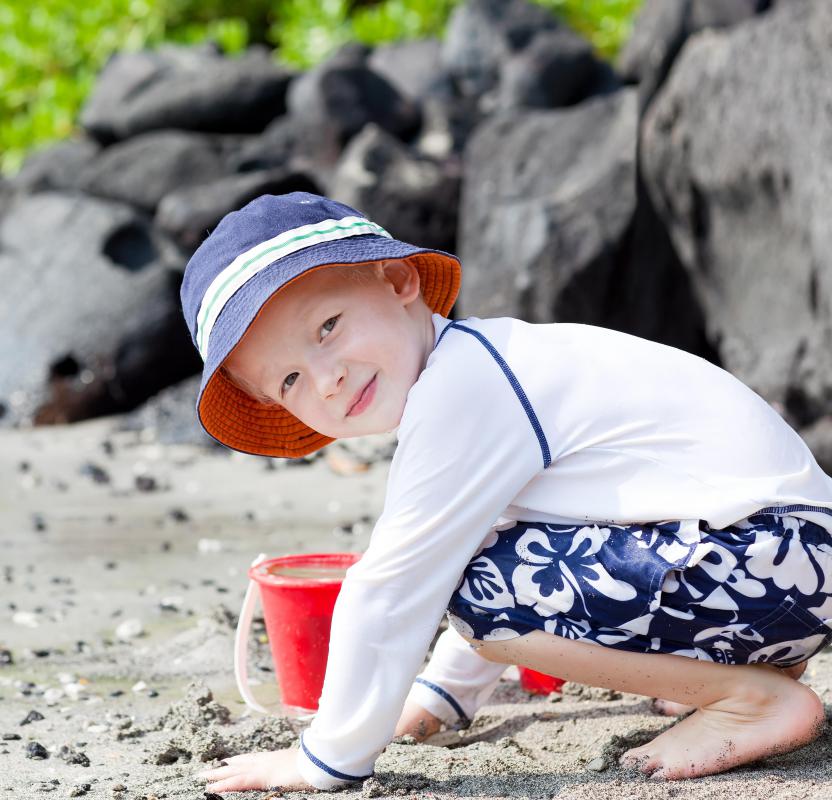At WiseGEEK, we're committed to delivering accurate, trustworthy information. Our expert-authored content is rigorously fact-checked and sourced from credible authorities. Discover how we uphold the highest standards in providing you with reliable knowledge.
What Factors Influence a Person's Risk of Skin Cancer?
One of the most critical factors that increases the risk of skin cancer is sun exposure. Sunlight contains ultraviolet lights called UVA and UVB, both of which are prime external causes of skin cancers. Minimal sun exposure in itself is not always a bad thing because the sun provides the body with vitamin D, but prolonged exposure can be harmful. Individuals who experience excessive sun exposure before 15 years of age are in greater danger of getting skin cancer. For this reason, people should always seek protection from the sun with hats, clothing, sunglasses, and sunscreen with a minimum sun protection factor (SPF) of 15.
Another factor to consider when it comes to skin cancer is the color of the skin. The substance called melanin is responsible for giving the skin its color: more melanin brings about a darker skin color. Melanin also serves as protection from the sun, so fair-skinned people are more at risk of skin cancer than those with darker skin. A person who has fair skin should wear more protective clothing and a higher SPF number for sunscreen lotions. This does not mean, though, that a darker-skinned person will not be prone to developing skin cancer; sometimes, dark skin can pose more danger, as the cancer is already in its advanced stage before being diagnosed.

Aside from sun exposure, moles can also cause skin cancer, specifically melanoma, one of the more aggressive skin cancer types. People who have more moles or freckles have a higher risk of skin cancer. Dermatologists use an easy guide called the ABCDE for at-home mole inspections. ABCDE stands for asymmetry, border, color, diameter, and evolution. Any mole changes such as enlargement, irregular shape, and darker pigmentation should warrant a visit to the doctor.

As with all cancers, a person is more at risk of skin cancer if his or her family already has a history of the disease. An immediate relative such as a parent, grandparent, or a sibling with a cancer history is an indication of higher probability of skin cancer. A person who has had skin cancer in the past can have a recurrence of the disease, sometimes in a more destructive form.

Older people are also more likely to have skin cancer than younger ones, simply because several types of skin cancers usually surface with age. Accumulated sunburns, though peeled off, can progress into something more damaging. For that reason, risk of skin cancer can decrease with early prevention and protection.
AS FEATURED ON:
AS FEATURED ON:
















Discuss this Article
Post your comments